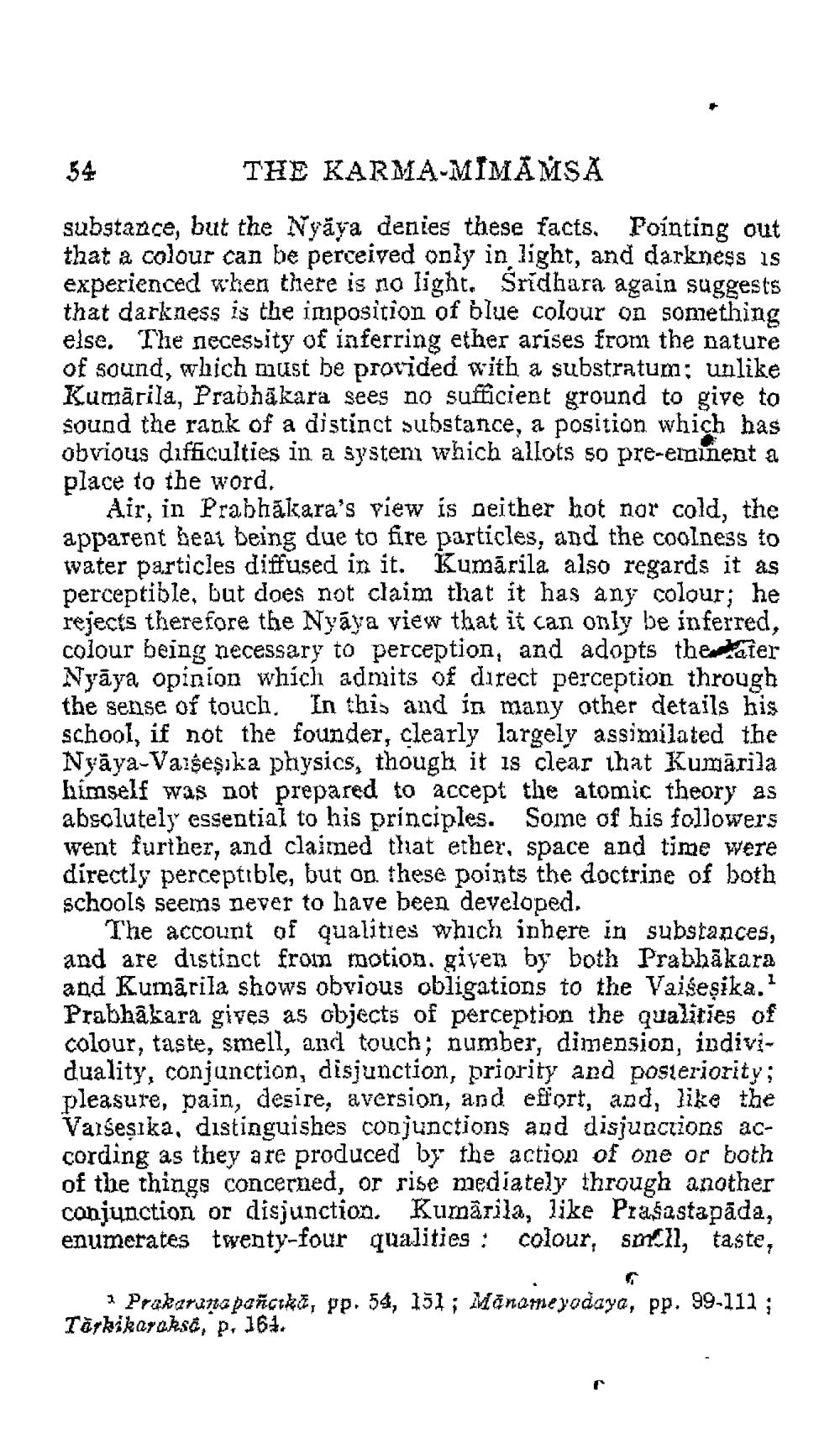________________
THE KARMA-MIMAMSA
substance, but the Nyaya denies these facts. Pointing out that a colour can be perceived only in light, and darkness is experienced when there is no light. Sridhara again suggests that darkness is the imposition of blue colour on something else. The necessity of inferring ether arises from the nature of sound, which must be provided with a substratum; unlike Kumārila, Prabhakara sees no sufficient ground to give to sound the rank of a distinct substance, a position which has obvious difficulties in a system which allots so pre-eminent a place to the word.
54
Air, in Prabhakara's view is neither hot nor cold, the apparent heat being due to fire particles, and the coolness to water particles diffused in it. Kumārila also regards it as perceptible, but does not claim that it has any colour; he rejects therefore the Nyaya view that it can only be inferred, colour being necessary to perception, and adopts theater Nyaya opinion which admits of direct perception through the sense of touch. In this and in many other details his school, if not the founder, clearly largely assimilated the Nyaya-Vaisesika physics, though it is clear that Kumarila himself was not prepared to accept the atomic theory as absolutely essential to his principles. Some of his followers went further, and claimed that ether, space and time were directly perceptible, but on these points the doctrine of both schools seems never to have been developed.
The account of qualities which inhere in substances, and are distinct from motion. given by both Prabhakara and Kumārila shows obvious obligations to the Vaiseṣika.1 Prabhakara gives as objects of perception the qualities of colour, taste, smell, and touch; number, dimension, individuality, conjunction, disjunction, priority and posteriority; pleasure, pain, desire, aversion, and effort, and, like the Vaisesika, distinguishes conjunctions and disjunctions according as they are produced by the action of one or both of the things concerned, or rise mediately through another conjunction or disjunction. Kumarila, like Prasastapāda, enumerates twenty-four qualities: colour, smell, taste,
C
* Prakarana pañcıkā, pp. 54, 151; Mānameyodaya, pp. 99-111; Tärkikarakso, p. 161.




